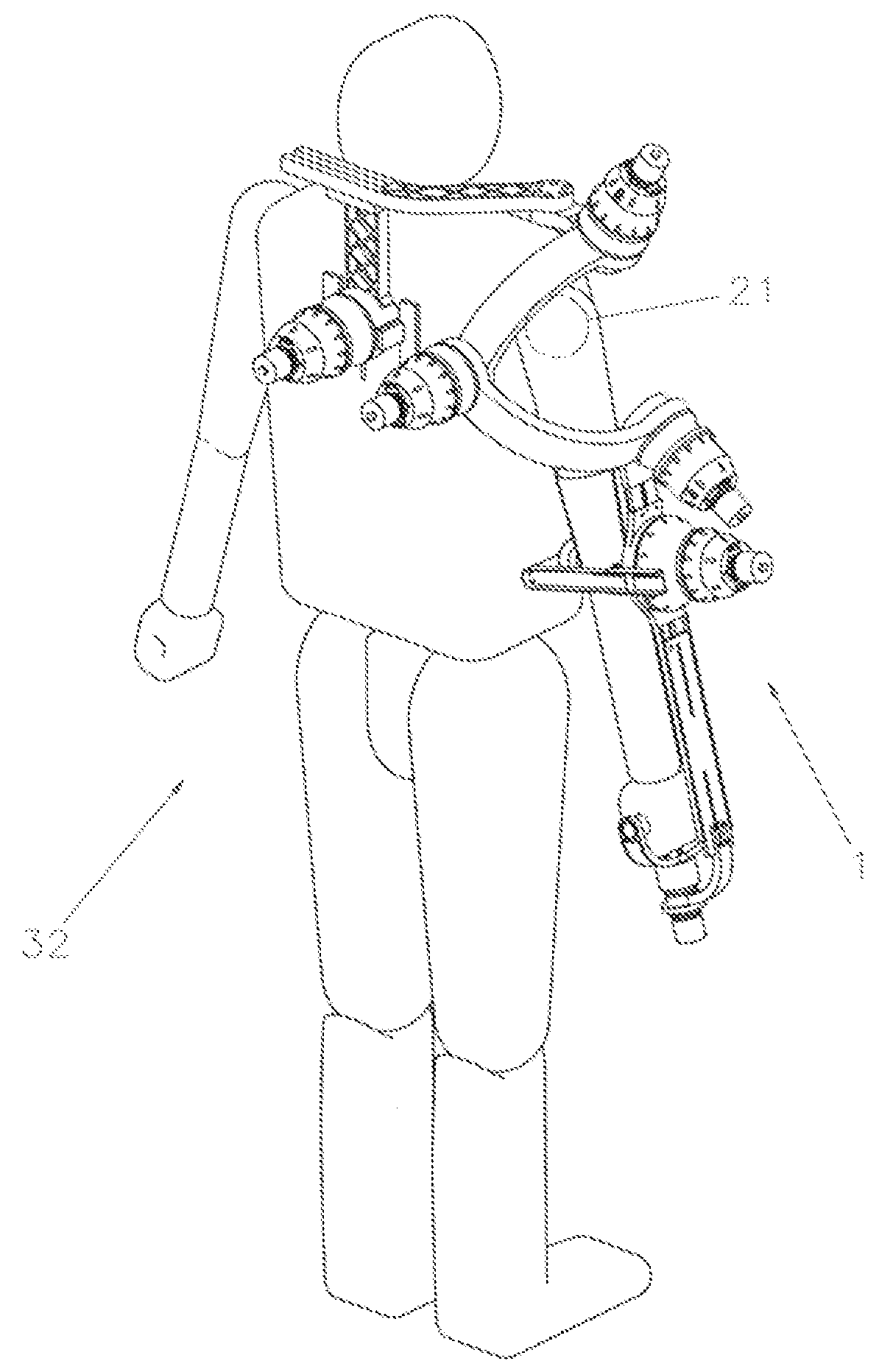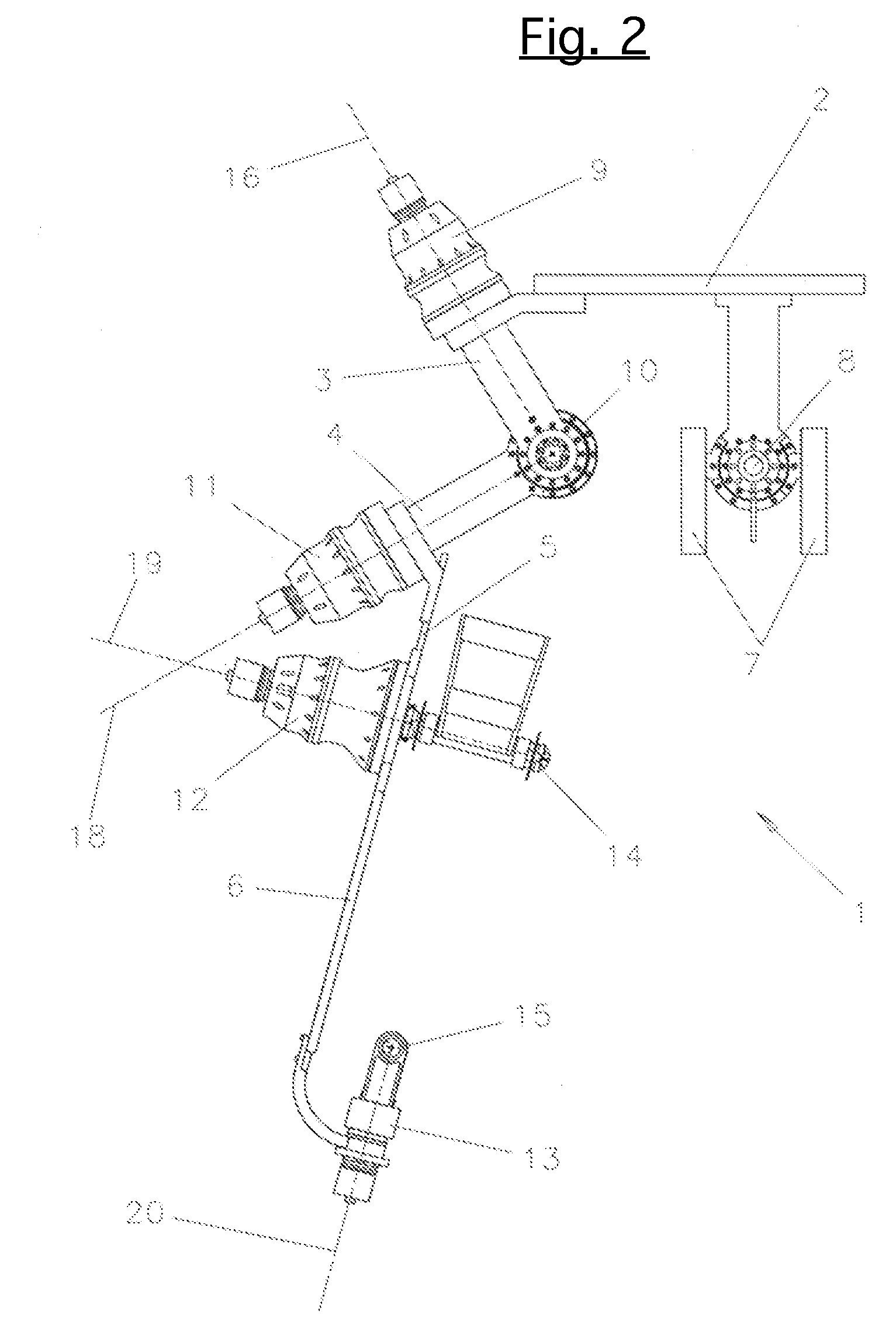Portable Arm Exoskeleton for Shoulder Rehabilitation
a technology of exoskeleton and portability, which is applied in the field of powered arm exoskeletons, which can solve the problems of exceedingly difficult joint range matching, limited range of motion, and unconstrained human torsos
- Summary
- Abstract
- Description
- Claims
- Application Information
AI Technical Summary
Benefits of technology
Problems solved by technology
Method used
Image
Examples
Embodiment Construction
[0056]In FIGS. 1 to 4 a possible embodiment is shown of an exoskeleton interface apparatus 1, according to the invention, for measuring the posture of the scapula, arm, forearm, and wrist of a human and for reflecting controlled forces in predetermined areas of contact thereof.
[0057]As shown in said figures, the apparatus 1 comprises six rigid links 2-7 arranged in series capable of rotating reciprocally at the respective ends for monitoring angular movements of the scapula, arm, forearm, and wrist of a human 32 and having at the tip a handgrip 15 for the human 32 same (FIGS. 10-13) for reflecting a force feedback.
[0058]In particular, rigid links 3 and 4 can rotate at their ends by rotational joints 9-11, which have their rotational axes 16-18 incident in a point 21 that is the intersection of the physiological axes of the shoulder.
[0059]More in detail, exoskeleton 1 comprises a rigid link 7, capable of being mounted on a backpack or vest worn by the human 32 for the purpose of adju...
PUM
 Login to View More
Login to View More Abstract
Description
Claims
Application Information
 Login to View More
Login to View More - R&D
- Intellectual Property
- Life Sciences
- Materials
- Tech Scout
- Unparalleled Data Quality
- Higher Quality Content
- 60% Fewer Hallucinations
Browse by: Latest US Patents, China's latest patents, Technical Efficacy Thesaurus, Application Domain, Technology Topic, Popular Technical Reports.
© 2025 PatSnap. All rights reserved.Legal|Privacy policy|Modern Slavery Act Transparency Statement|Sitemap|About US| Contact US: help@patsnap.com



